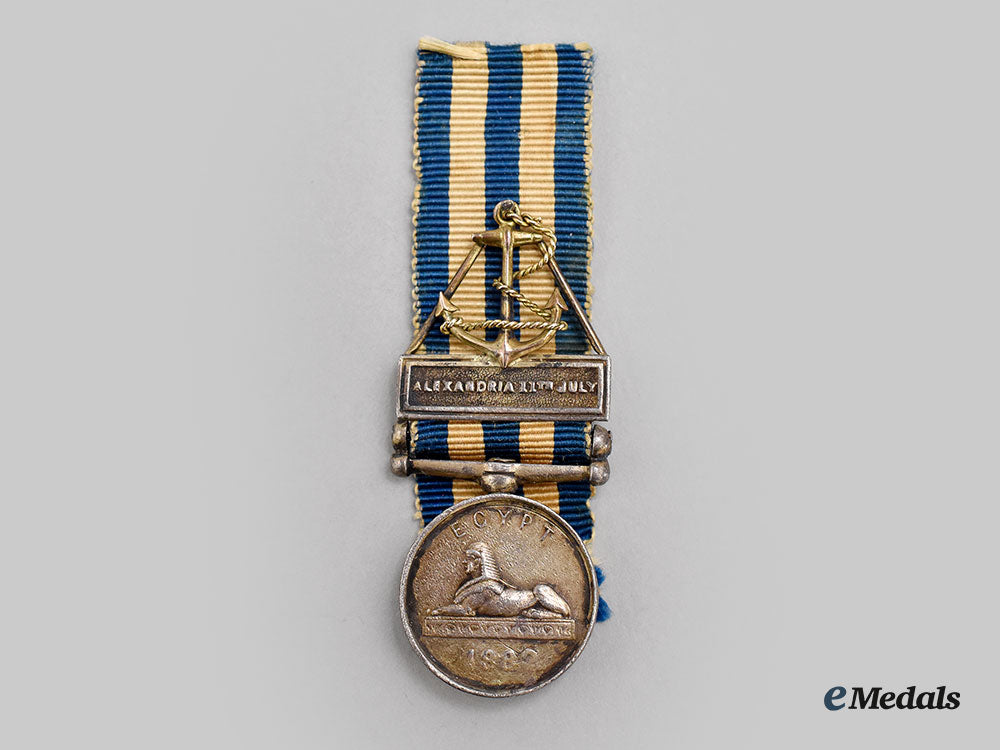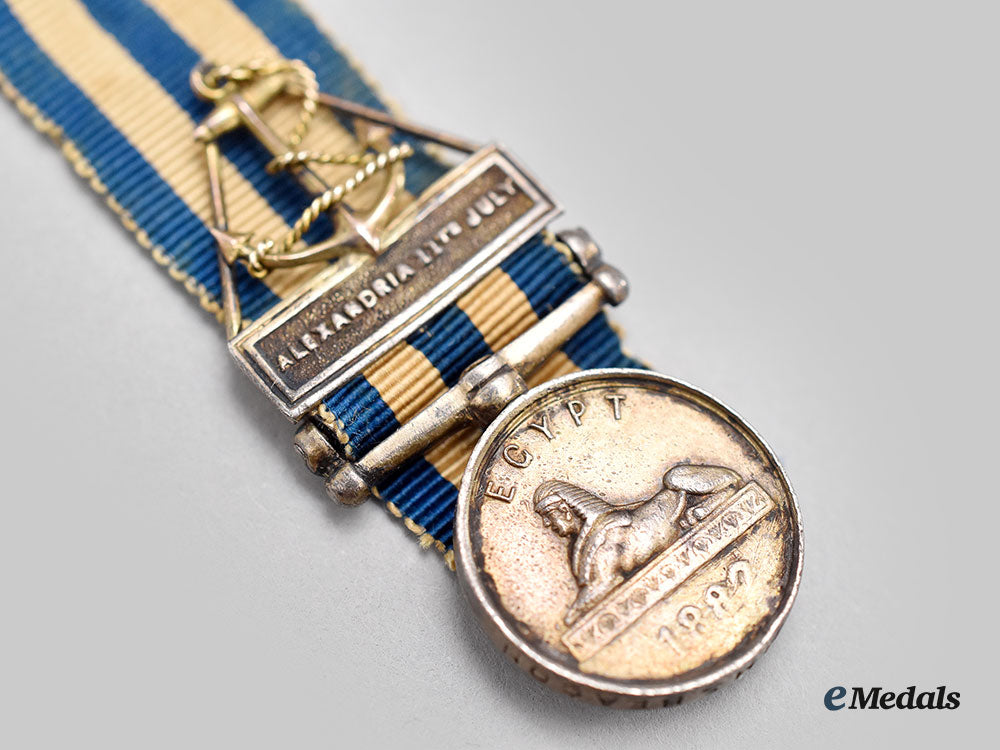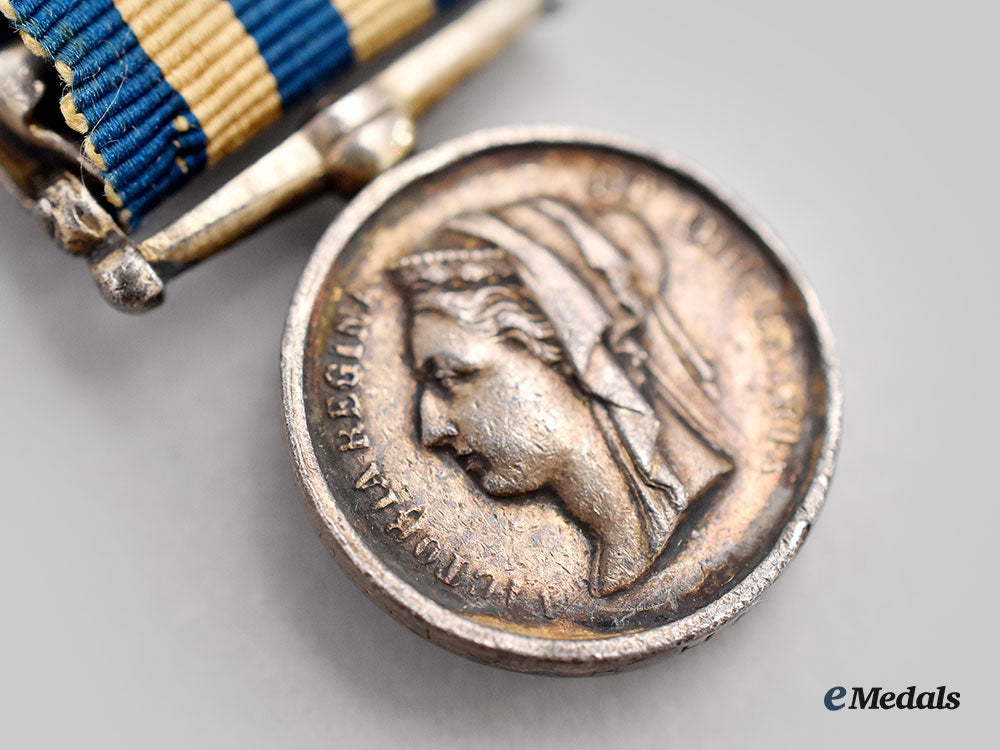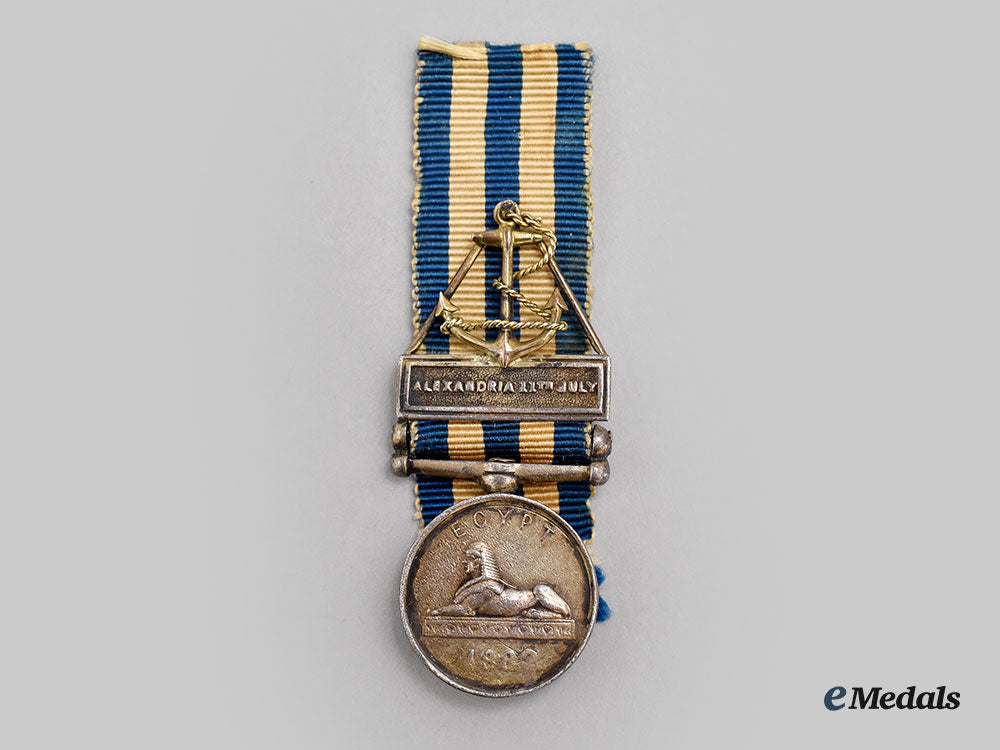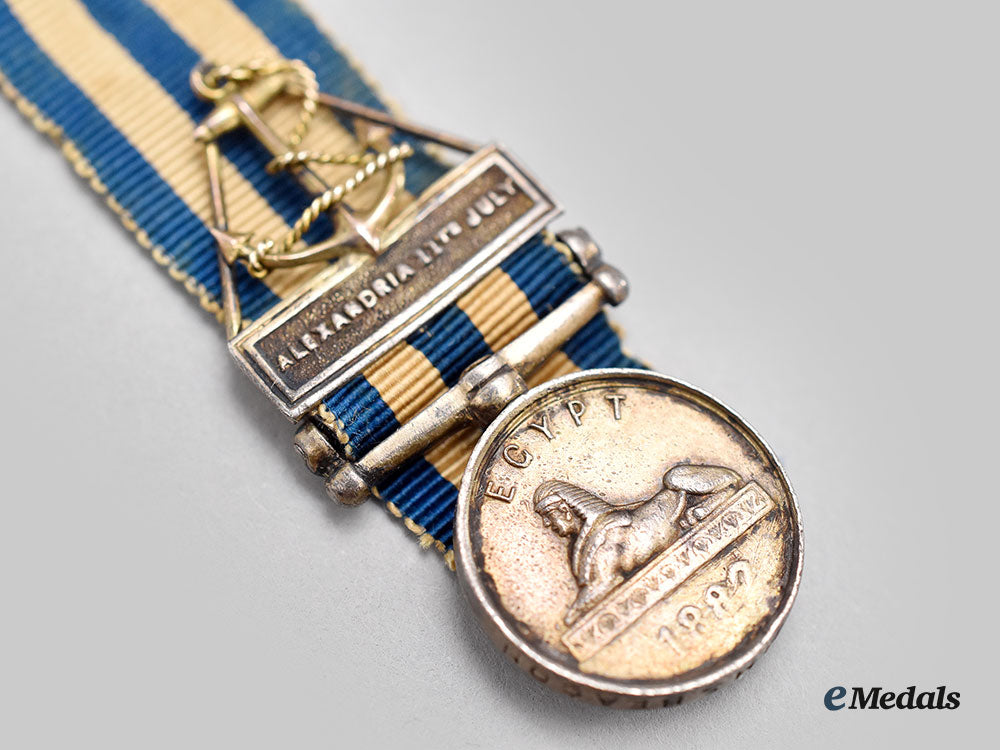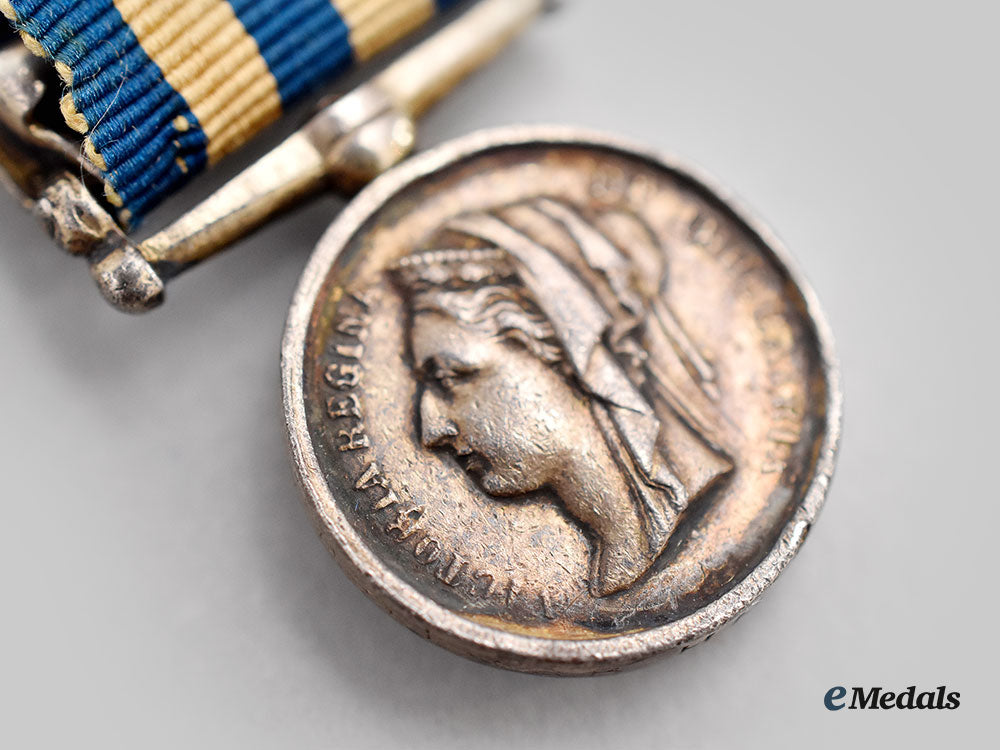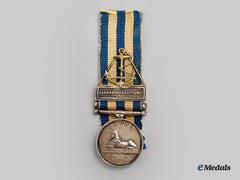
LOADING ...
In response to evolving domestic opinion, eMedals Inc has made the conscious decision to remove the presentation of German Third Reich historical artifacts from our online catalogue. For three decades, eMedals Inc has made an effort to preserve history in all its forms. As historians and researchers, we have managed sensitive articles and materials with the greatest of care and respect for their past and present social context. We acknowledge the growing sentiments put forth by the Canadian public and have taken proactive actions to address this opinion.
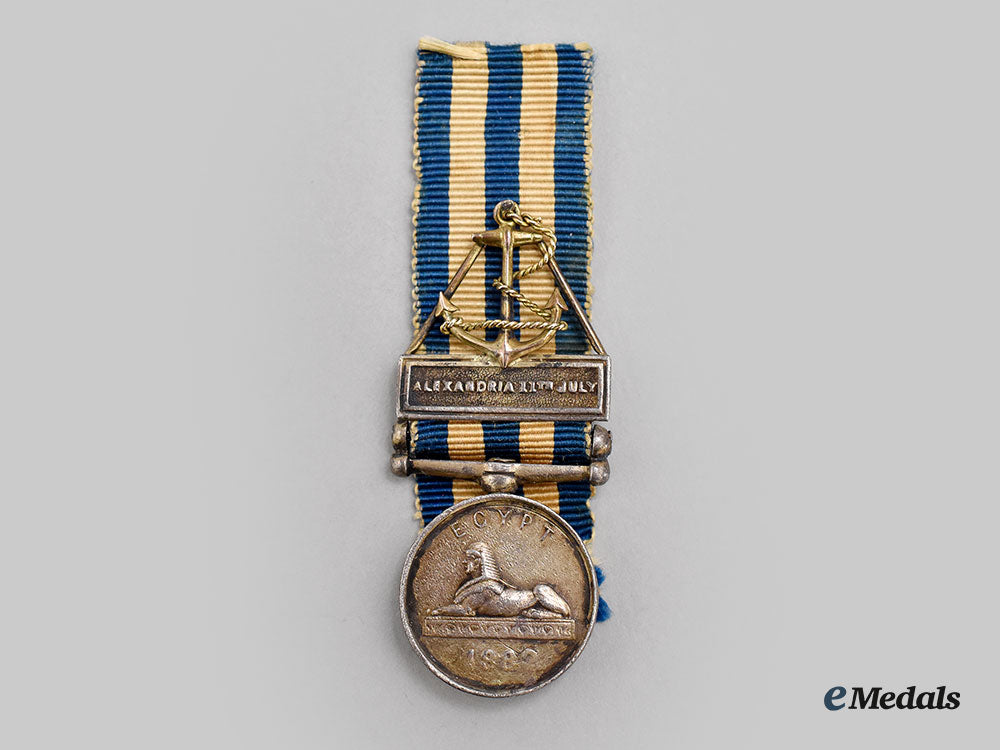


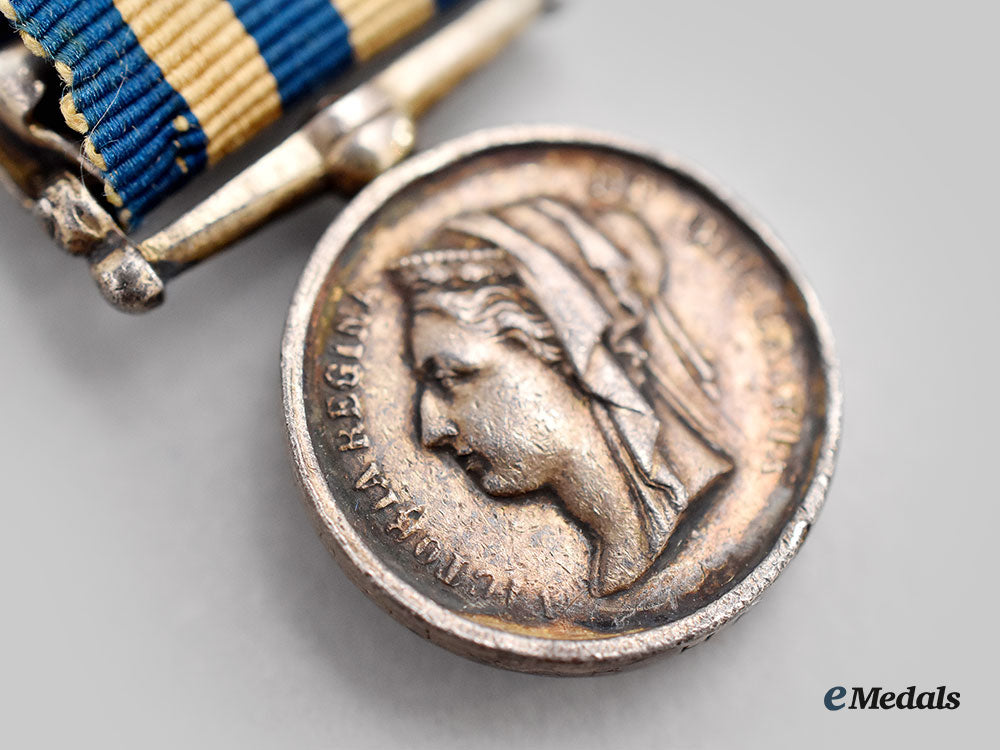
United Kingdom. A Miniature Egypt Medal 1882-1889, To The H.m.s. Beacon
United Kingdom. A Miniature Egypt Medal 1882-1889, To The H.m.s. Beacon
SKU: ITEM: GB7689
Current Bid:
Your Max Bid:
Bid History:
Time Remaining:
Couldn't load pickup availability
Shipping Details
Shipping Details
eMedals offers rapid domestic and international shipping. Orders received prior to 12:00pm (EST) will be shipped on the same business day.* Orders placed on Canadian Federal holidays will be dispatched the subsequent business day. Courier tracking numbers are provided for all shipments. All items purchased from eMedals can be returned for a full monetary refund or merchandise credit, providing the criteria presented in our Terms & Conditions are met. *Please note that the addition of a COA may impact dispatch time.
Shipping Details
eMedals offers rapid domestic and international shipping. Orders received prior to 12:00pm (EST) will be shipped on the same business day.* Orders placed on Canadian Federal holidays will be dispatched the subsequent business day. Courier tracking numbers are provided for all shipments. All items purchased from eMedals can be returned for a full monetary refund or merchandise credit, providing the criteria presented in our Terms & Conditions are met. *Please note that the addition of a COA may impact dispatch time.
Description
Description
1. Clasp - ALEXANDRIA 11th JULY. In silver, "1882" reverse, re-engraved in large capitals "H.M.S. BEACON" on the edge, with traces of the former naming visible to the left of the current text, measuring 17.5 mm in diameter, the medal surmounted by an anchor on a triangular frame in silver gilt, bruised, edge nicks, contact marks, lightly soiled original ribbon, fine.
Footnote:
1. The Egypt Medal was awarded for the military actions involving the British Army and Royal Navy during the 1882 Anglo-Egyptian War and in the Sudan between 1884 and 1889. Resentment at increasing British and other European involvement in Egypt since the opening of the Suez Canal in 1869 triggered an Egyptian army mutiny that threatened the authority of the British-backed Khedive of Egypt, Tewfik Pasha. The British military intervention was in response, to protect British interests. Once in Egypt, the British became involved in the conflicts in the Sudan, which Egypt had occupied since the 1820s. All recipients of the Egypt Medal were also eligible for one of the four versions of the Khedive's Star.
2. The Bombardment of Alexandria in Egypt by the British Mediterranean Fleet took place on July 11-13, 1882. Admiral Beauchamp Seymour was in command of a fleet of fifteen Royal Navy ironclad ships which had previously sailed to the harbour of Alexandria to support the khedive Tewfik Pasha amid Ahmed 'Urabi's nationalist uprising against his administration and its close ties to British and French financiers. He was joined in the show of force by a French flotilla as well. The move provided some security to the khedive, who withdrew his court to the now-protected port, but strengthened 'Urabi's nationalists within the army and throughout the remainder of Egypt. On June 11th, anti-European riots began in Alexandria. The city's European residents fled and the Egyptian 'Urabist army began fortifying and arming the harbour. An ultimatum to cease this build-up being refused, the British fleet began a 10.5 hour bombardment of the city without French assistance. Historians argue about whether Admiral Seymour exaggerated the threat from the Egyptian batteries at Alexandria in order to force the hand of a reluctant Gladstone administration. Once the British had attacked the city, they then proceeded to a full-scale invasion to restore the authority of the khedive. Egypt remained under British influence until 1952, with the last British troops leaving in 1956.
3. The HMS Beacon was one of five gunvessels (including Condor, Bittern, Cygnet, Decoy), along with eight HMS Battleships (Alexandra, Superb, Sultan, Temeraire, Inflexible, Monarch, Invincible, Penelope), the Torpedo Boat HMS Hecla and the Despatch Boat HMS Helicon, that participated in the Bombardment of Alexandria.
Description
1. Clasp - ALEXANDRIA 11th JULY. In silver, "1882" reverse, re-engraved in large capitals "H.M.S. BEACON" on the edge, with traces of the former naming visible to the left of the current text, measuring 17.5 mm in diameter, the medal surmounted by an anchor on a triangular frame in silver gilt, bruised, edge nicks, contact marks, lightly soiled original ribbon, fine.
Footnote:
1. The Egypt Medal was awarded for the military actions involving the British Army and Royal Navy during the 1882 Anglo-Egyptian War and in the Sudan between 1884 and 1889. Resentment at increasing British and other European involvement in Egypt since the opening of the Suez Canal in 1869 triggered an Egyptian army mutiny that threatened the authority of the British-backed Khedive of Egypt, Tewfik Pasha. The British military intervention was in response, to protect British interests. Once in Egypt, the British became involved in the conflicts in the Sudan, which Egypt had occupied since the 1820s. All recipients of the Egypt Medal were also eligible for one of the four versions of the Khedive's Star.
2. The Bombardment of Alexandria in Egypt by the British Mediterranean Fleet took place on July 11-13, 1882. Admiral Beauchamp Seymour was in command of a fleet of fifteen Royal Navy ironclad ships which had previously sailed to the harbour of Alexandria to support the khedive Tewfik Pasha amid Ahmed 'Urabi's nationalist uprising against his administration and its close ties to British and French financiers. He was joined in the show of force by a French flotilla as well. The move provided some security to the khedive, who withdrew his court to the now-protected port, but strengthened 'Urabi's nationalists within the army and throughout the remainder of Egypt. On June 11th, anti-European riots began in Alexandria. The city's European residents fled and the Egyptian 'Urabist army began fortifying and arming the harbour. An ultimatum to cease this build-up being refused, the British fleet began a 10.5 hour bombardment of the city without French assistance. Historians argue about whether Admiral Seymour exaggerated the threat from the Egyptian batteries at Alexandria in order to force the hand of a reluctant Gladstone administration. Once the British had attacked the city, they then proceeded to a full-scale invasion to restore the authority of the khedive. Egypt remained under British influence until 1952, with the last British troops leaving in 1956.
3. The HMS Beacon was one of five gunvessels (including Condor, Bittern, Cygnet, Decoy), along with eight HMS Battleships (Alexandra, Superb, Sultan, Temeraire, Inflexible, Monarch, Invincible, Penelope), the Torpedo Boat HMS Hecla and the Despatch Boat HMS Helicon, that participated in the Bombardment of Alexandria.
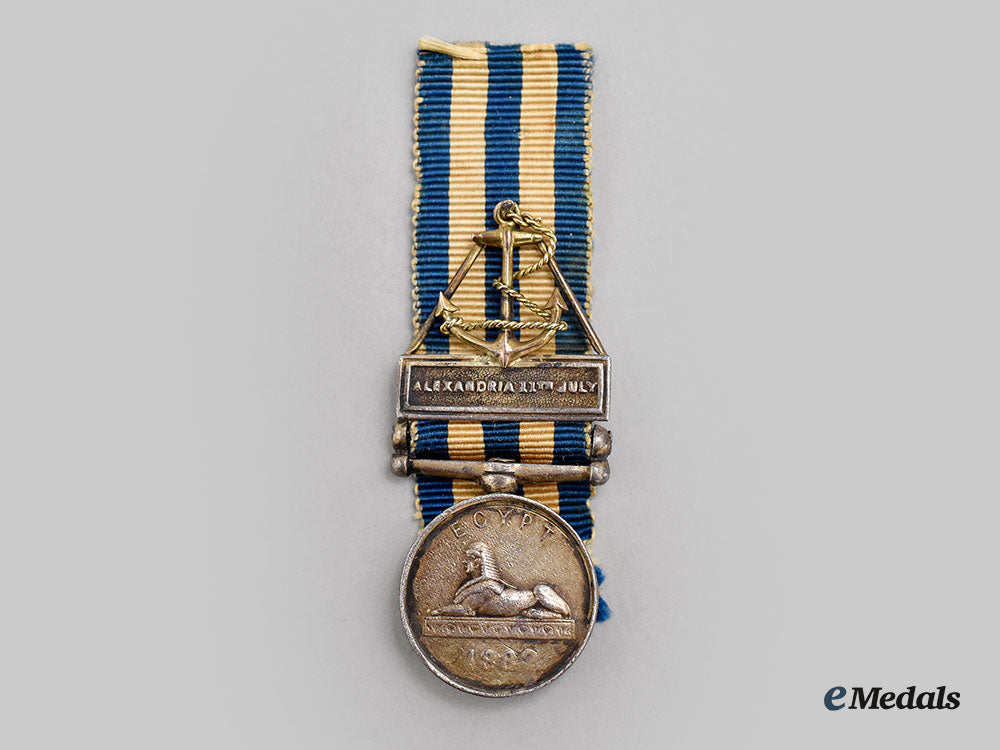
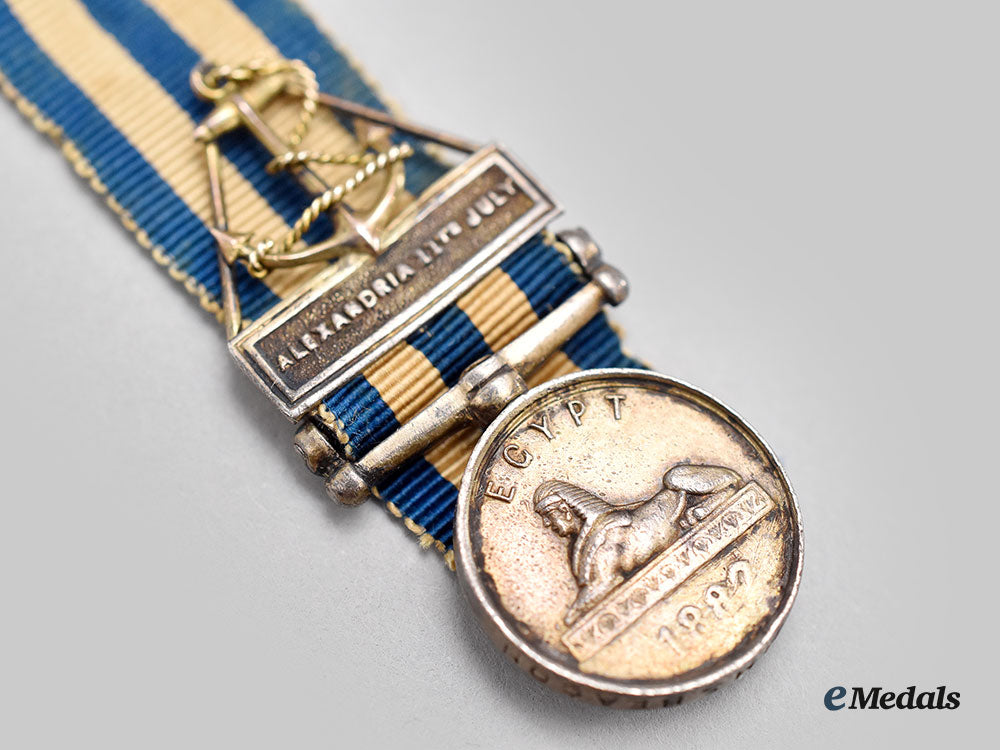

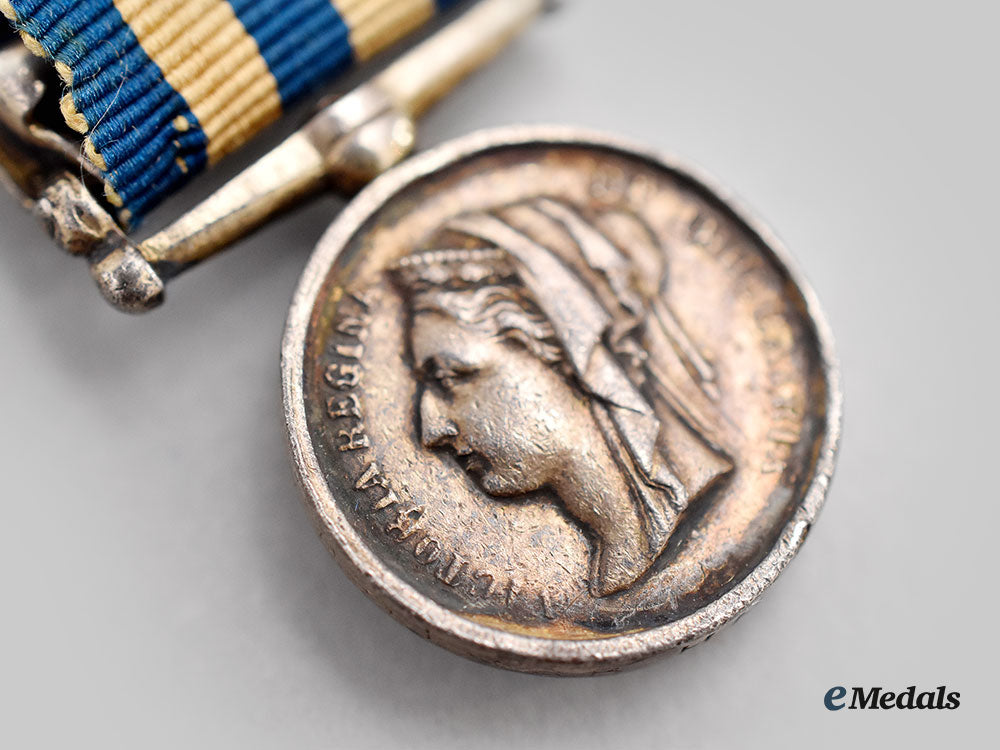
You May Also Like
Serbia, Kingdom. An Order of the White Eagle, III Class Decoration, Type II
EU23990
Germany, Third Reich. An Order of the German Eagle, I Class Merit Cross with Case, by Gebrüder Godet
G60777
Germany, Third Reich. A Rare Order of the German Eagle, Merit Cross with Breast Star and Case, by Gebrüder Godet
G60778
Germany, Luftwaffe. A Mint Pilot’s Badge, Type 1, by Gebrüder Wegerhoff
G60779
Germany, Federal Republic. A 1939 Grand Cross of the Iron Cross, Exhibition Example by Rudolf Souval, c. 1970
G60780
-
Serbia, Kingdom. An Order of the White Eagle, III Class Decoration, Type II
EU23990
Add to CartRegular price $1,650 USDRegular price $0 USD Sale price $1,650 USDUnit price / per -
Germany, Third Reich. An Order of the German Eagle, I Class Merit Cross with Case, by Gebrüder Godet
G60777
Add to CartRegular price $3,450 USDRegular price $0 USD Sale price $3,450 USDUnit price / per -
Germany, Third Reich. A Rare Order of the German Eagle, Merit Cross with Breast Star and Case, by Gebrüder Godet
G60778
Add to CartRegular price $7,650 USDRegular price $0 USD Sale price $7,650 USDUnit price / per -
Germany, Luftwaffe. A Mint Pilot’s Badge, Type 1, by Gebrüder Wegerhoff
G60779
Add to CartRegular price $1,950 USDRegular price $0 USD Sale price $1,950 USDUnit price / per -
Germany, Federal Republic. A 1939 Grand Cross of the Iron Cross, Exhibition Example by Rudolf Souval, c. 1970
G60780
Add to CartRegular price $1,900 USDRegular price $0 USD Sale price $1,900 USDUnit price / per
Do you have a similar item you are interested in selling?
Please complete the form and our client care representatives will contact you.
Sell Item